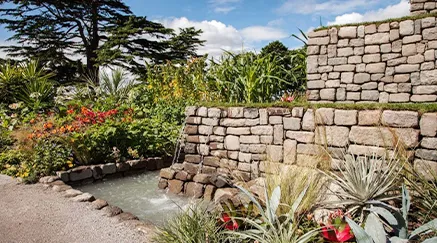-
 Phone:
Phone: -
 Email:
Email:

Constructing a Rock Wall with Durable Wire Mesh for Structural Support and Stability
Rock Wall with Wire Mesh An Innovative Solution for Landscape and Erosion Control
In the realm of landscaping and erosion control, the rock wall with wire mesh system has emerged as a practical and aesthetically pleasing solution. This innovative technique not only enhances the visual appeal of outdoor spaces but also serves crucial functions in preventing soil erosion, providing structural support, and managing drainage. In this article, we will explore the benefits, applications, and construction of rock walls reinforced with wire mesh.
Benefits of Rock Walls with Wire Mesh
One of the primary advantages of a rock wall with wire mesh is its strength and durability. The wire mesh adds a layer of stability, ensuring that the rocks remain in position, even under significant pressure from soil and water. This is particularly valuable in environments where heavy rainfall or flooding is common, as the mesh helps to secure the rocks and prevent shifting.
Moreover, this system promotes effective drainage. Erosion can be exacerbated by poor water management; hence, the structure allows water to flow naturally through the gaps between the rocks. This flow prevents the accumulation of water, which can lead to further erosion and structural weakening. The combination of rocks and wire mesh efficiently channels water away from critical areas, promoting healthier ecosystems.
Aesthetic Appeal
Beyond its practical benefits, a rock wall with wire mesh is also a visually appealing feature in any landscape. The natural texture and color of the rocks can complement various styles of garden design, from rustic to modern. Homeowners and landscape architects often use these walls to create terraced gardens, adding dimension and intrigue to outdoor spaces. When integrated with flowering plants and greenery, these walls can create a stunning focal point in any landscape, blending functionality with beauty.
rock wall with wire mesh

Applications
The applications of a rock wall with wire mesh extend far beyond simple landscaping. These structures are commonly used in agricultural settings to create terraces in hilly areas, mitigating the risk of soil erosion while maximizing usable land. Additionally, they are ideal for constructing retaining walls that support slopes, preventing landslides and protecting properties from potential damage.
In urban areas, rock walls with wire mesh can serve as an eco-friendly solution for controlling stormwater runoff. By incorporating these systems into city landscapes, engineers can create permeable surfaces that enhance water absorption into the soil, reducing the burden on storm drainage systems and decreasing the risk of flooding.
Construction Process
Building a rock wall with wire mesh involves a systematic approach. First, the site is prepared by clearing debris and marking the layout. Next, a foundation trench is excavated to provide a stable base. Large rocks are then placed in the trench, ensuring they are positioned to provide maximum stability. Following this, wire mesh is installed over the rocks to secure them. The mesh can be fastened with spikes or staples, ensuring it remains tightly in place. Finally, additional layers of rocks can be added, and voids can be filled with smaller stones to enhance stability and drainage.
Conclusion
The rock wall with wire mesh is a versatile and efficient solution for both ecological and aesthetic landscaping needs. By combining durability, flexibility, and beauty, it stands out as an ideal choice for erosion control, structural support, and landscape enhancement. Whether in a residential garden or large agricultural setting, the integration of rock walls with wire mesh can provide lasting benefits, making them a preferred choice for sustainable land management. As awareness of environmental challenges grows, such innovations play a key role in creating resilient landscapes for the future.
-
Wire Mesh for Every Need: A Practical SolutionNewsJul.25,2025
-
Steel Fences: Durable, Secure, and Stylish OptionsNewsJul.25,2025
-
Roll Top Fencing: A Smart Solution for Safety and SecurityNewsJul.25,2025
-
Cattle Farm Fencing Solutions for Maximum SecurityNewsJul.25,2025
-
Affordable Iron Binding Wire SolutionsNewsJul.25,2025
-
Affordable Galvanized Wire SolutionsNewsJul.25,2025
-
Wire Hanger Recycling IdeasNewsJul.25,2025








